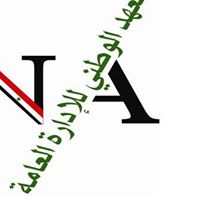اشترك بالحزمة الذهبية واحصل على وصول غير محدود شمرا أكاديميا
تسجيل مستخدم جديدأمثلة مسألة توزيع الكتل الترابية متعددة الأنواع باستخدام البرمجة الخطية
Optimization Of Earthmoving Problem With Multiple Soil Types Using Linear Programing
اسأل ChatGPT حول البحث

تمثل أعمال نقل التربة جزءاً أساسياً من أعمال المشاريع الهندسية ، كما تمثل تكلفة بنود تلك الأعمال الجزء الأكبر في مشروعات السدود و الطرق و المطارات. و لما كانت التكلفة تعتمد على مجموعة من العوامل المؤثرة في تلك التكلفة فان التكلفة من المسائل الهامة في إدارة المشاريع. تناول هذا البحث عرضاً موجزاً لمختلف الطرق التي استخدمت في حساب تكلفة أعمال التربة و العوامل المؤثرة على هذه التكلفة. تم تطوير النماذج الرياضية القديمة بحيث يمكنها التعامل مع وجود أكثر من نوع من التربة في أماكن الحفر و الردم كما عالج النموذج المطور مشكلة نقل التربة عند تواجد أنواع من التربة في أماكن الحفر لابد من ترحيلها لأنها غير صالحة للردم بحيث تم استخدام البرمجة الخطية لصياغة النموذج الرياضي و تكوين دالة الهدف و الشروط المقيدة مع الأخذ بعين الاعتبار جميع الحالات التي يمكن تواجدها في المشروع. تم إعداد برنامج حاسوبي لتكوين المشكلة بشكل قياسي و استخدام برنامج (LINDO) لحل النموذج المشكل من البرنامج الحاسوبي و إعطاء الحل الأمثل.
Earthmoving is the process of moving and processing soil from one location to another to alter an existing land surface into a desired configuration. Highways, dams, and airports are typical examples of heavy earthmoving projects. Over the years, construction managers have devised ways to determine the quantities of material to be moved from one place to another. Various types of soil (soft earth, sand, hard clay, …, etc.) create different level of difficulty of the problem. Earthmoving problem has traditionally been solved using mass diagram method or variety of operational research techniques. However, existing models do not present realistic solution for the problem. Multiple soil types are usually found in cut sections and specific types of soil are required in fill sections. Some soil types in cut sections are not suitable to be used in fill sections and must be disposed of. In this paper a new mathematical programming model is developed to find-out the optimum allocation of earthmoving works. In developing the proposed model, different soil types are considered as well as variation of unit cost with earth quantities moved. Suggested borrow pits and/or disposal sites are introduced to minimize the overall earthmoving cost. The proposed model is entirely formulated using the programming capabilities of VB6 while LINDO is used to solve the formulated model to get the optimum solution. An example project is presented to show how the developed model can be implemented.
-
ما هي الأهداف الرئيسية لهذا البحث؟
يهدف البحث إلى تطوير نموذج رياضي لتوزيع الكتل الترابية بين أجزاء المشروع المختلفة بأقل تكلفة ممكنة، مع الأخذ بعين الاعتبار وجود أنواع متعددة من التربة وتقديم عدة عروض أسعار للتربة الموردة بناءً على الكميات المطلوبة.
-
ما هي الأدوات البرمجية المستخدمة في هذا البحث؟
تم استخدام برنامج (LINDO) لحل النموذج الرياضي، بالإضافة إلى تطوير برنامج حاسوبي باستخدام Visual Basic لتكوين المشكلة بشكل قياسي وتقديم الحل الأمثل.
-
ما هي العوامل التي يأخذها النموذج المطور بعين الاعتبار؟
يأخذ النموذج المطور بعين الاعتبار وجود أنواع متعددة من التربة، التكلفة المتغيرة لنقل التربة بناءً على الكميات ومسافات النقل، واقتراح أماكن جديدة للإعارة ورمي الفائض لتقليل التكلفة الإجمالية.
-
ما هي التوصيات التي يقدمها البحث؟
يوصي البحث باستخدام النموذج المقترح من قبل مديري المشاريع لأنه يزودهم بأداة فعالة وسهلة الاستخدام لمعرفة كميات وتكاليف نقل التربة بالشكل الأمثل في المشروع.
اقرأ أيضاً



